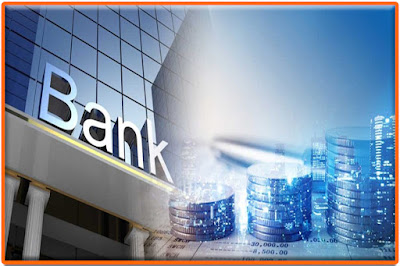Banking in Pakistan is dominated by the state-owned Bank of Pakistan, which controls around 60% of the banking assets in the country. The other major banks are the National Bank of Pakistan (NBP), Habib Bank Limited (HBL), and MCB Bank Limited (MCB). These four banks control about 80% of all deposits and advances in Pakistan.
The remaining 20% or so of the market is composed of a large number of small local banks and foreign banks operating in Pakistan.
The remaining 20% or so of the market is composed of a large number of small local banks and foreign banks operating in Pakistan.
 |
| Pakistan Banking |
Pakistan is home to a thriving banking sector, with a number of local and international banks operating in the country. The Pakistani banking sector has seen strong growth in recent years, with assets increasing by over 20% between 2016 and 2018.
The Pakistani banking sector is well-regulated and supervised by the State Bank of Pakistan (SBP), the central bank of the country.
Banks in Pakistan are required to maintain high standards of governance and financial stability. The Pakistani banking sector offers a wide range of products and services to its customers, including personal and corporate banking, trade finance, project financing, Islamic banking, and more. There is a growing demand for Islamic banking products and services in Pakistan, as Muslims make up around 96% of the population.
Despite some challenges, the Pakistani banking sector is on track for continued growth in the years ahead.
Banks in Pakistan are required to maintain high standards of governance and financial stability. The Pakistani banking sector offers a wide range of products and services to its customers, including personal and corporate banking, trade finance, project financing, Islamic banking, and more. There is a growing demand for Islamic banking products and services in Pakistan, as Muslims make up around 96% of the population.
Despite some challenges, the Pakistani banking sector is on track for continued growth in the years ahead.
What is the Average Interest Rate for Savings Accounts in Pakistani Banks
There are a few different types of savings accounts in Pakistani banks, each with their own average interest rate. The most common type of savings account is the basic savings account, which has an average interest rate of 4%. Other types of savings accounts, such as premium or reward-based accounts, often have higher interest rates.
For example, a premium account might have an average interest rate of 6%, while a reward-based account could offer 8% or more.
For example, a premium account might have an average interest rate of 6%, while a reward-based account could offer 8% or more.
How Many Pakistani Banks Offer Online Banking Services
While the number of Pakistani banks offering online banking services has increased in recent years, it is still relatively low compared to other countries. According to a report from The Express Tribune, as of 2016, there were only 21 banks in Pakistan offering online banking services. This is a small fraction of the approximately 200 banks operating in the country.
There are several reasons why the uptake of online banking services has been slow in Pakistan. One major reason is that many people do not have access to reliable internet services. According to the same report from The Express Tribune, only about 24% of the population has access to broadband internet.
This means that a majority of people are not able to take advantage of online banking services. Another reason why online banking has not taken off in Pakistan is because of security concerns. Many people are worried about their personal and financial information being hacked or stolen if they use online banking services.
With so many stories of data breaches making headlines around the world, it's no wonder that people are hesitant to use these services. However, there are some Pakistani banks that are working to make online banking more secure and accessible for their customers. For example, Standard Chartered Bank recently launched an app called "Secure Online Banking" which uses fingerprint authentication to log users into their accounts.
This adds an extra layer of security for users and gives them peace of mind knowing that their information is safe and secure. As more and more people gain access to reliable internet service and as security measures continue to improve, it's likely that the number of Pakistani banks offering online banking services will continue to grow.
There are several reasons why the uptake of online banking services has been slow in Pakistan. One major reason is that many people do not have access to reliable internet services. According to the same report from The Express Tribune, only about 24% of the population has access to broadband internet.
This means that a majority of people are not able to take advantage of online banking services. Another reason why online banking has not taken off in Pakistan is because of security concerns. Many people are worried about their personal and financial information being hacked or stolen if they use online banking services.
With so many stories of data breaches making headlines around the world, it's no wonder that people are hesitant to use these services. However, there are some Pakistani banks that are working to make online banking more secure and accessible for their customers. For example, Standard Chartered Bank recently launched an app called "Secure Online Banking" which uses fingerprint authentication to log users into their accounts.
This adds an extra layer of security for users and gives them peace of mind knowing that their information is safe and secure. As more and more people gain access to reliable internet service and as security measures continue to improve, it's likely that the number of Pakistani banks offering online banking services will continue to grow.
What are the Main Types of Pakistani Banknotes
 |
| Pakistan Banking |
Pakistani banknotes are issued by the central bank, which is the State Bank of Pakistan. The denominations of Pakistani banknotes range from ₨10 to ₨5,000. The most common type of Pakistani banknote is the ₨100 note.
Pakistani rupee notes come in six denominations: 10 rupees (red), 20 rupees (green), 50 rupees (blue), 100 rupees (brown), 500 rupees (purple) and 1,000 rupees (gray). There are also two types of coins: 1 and 2 rupee coins. The obverse side of all Pakistani banknotes features a portrait of Muhammad Ali Jinnah, the founder of Pakistan.
The reverses feature different designs depending on the denomination. For example, the 10-rupee note has a view of Lahore Fort on its reverse, while the 20-rupee note has a view of Badshahi Mosque on its reverse.
Pakistani rupee notes come in six denominations: 10 rupees (red), 20 rupees (green), 50 rupees (blue), 100 rupees (brown), 500 rupees (purple) and 1,000 rupees (gray). There are also two types of coins: 1 and 2 rupee coins. The obverse side of all Pakistani banknotes features a portrait of Muhammad Ali Jinnah, the founder of Pakistan.
The reverses feature different designs depending on the denomination. For example, the 10-rupee note has a view of Lahore Fort on its reverse, while the 20-rupee note has a view of Badshahi Mosque on its reverse.
What Coins are Used in Pakistan
Pakistan’s currency is the Pakistani rupee (PKR). One rupee is divided into 100 paise. There are coins of 1, 2, 5, 10, 25, and 50 paise, as well as 1 rupee.
The higher value notes are of Rs5, Rs10, Rs50, Rs100, Rs500 and Rs1,000. Pakistan’s economy has grown rapidly in recent years but inflation has also been high. The Pakistani government has taken steps to reduce inflation and stabilize the economy.
These measures have helped to keep the Pakistani rupee relatively stable against major currencies such as the US dollar (USD) and the euro (EUR).
The higher value notes are of Rs5, Rs10, Rs50, Rs100, Rs500 and Rs1,000. Pakistan’s economy has grown rapidly in recent years but inflation has also been high. The Pakistani government has taken steps to reduce inflation and stabilize the economy.
These measures have helped to keep the Pakistani rupee relatively stable against major currencies such as the US dollar (USD) and the euro (EUR).
When Did Pakistan First Introduce Paper Money
Pakistan's first paper money was introduced in 1948, shortly after the country gained independence from British rule. The initial currency issued was the Pakistani rupee, which was pegged to the Indian rupee at par. In 1951, Pakistan switched to using its own currency, the Pakistani dinar.
The dinar was initially pegged to the U.S. dollar at a rate of 1:1, but this was later changed to 1:2.50 in 1971.
The dinar was initially pegged to the U.S. dollar at a rate of 1:1, but this was later changed to 1:2.50 in 1971.
Conclusion
Pakistan's banking system has undergone major changes in the past few years, with the government taking steps to liberalize and privatize the sector. As a result, there are now a number of private banks operating in Pakistan, including foreign-owned banks. The Pakistani banking sector is relatively small compared to other countries in the region, but it is growing rapidly.
The main types of banks in Pakistan are commercial banks, development finance institutions (DFIs), and Islamic banks. Commercial banks are the largest type of bank in Pakistan and include both local and foreign-owned banks. Development finance institutions (DFIs) are state-owned organizations that provide financing for infrastructure projects and small businesses.
Islamic banks follow Sharia law and offer products and services that are compliant with Islamic teachings.
The main types of banks in Pakistan are commercial banks, development finance institutions (DFIs), and Islamic banks. Commercial banks are the largest type of bank in Pakistan and include both local and foreign-owned banks. Development finance institutions (DFIs) are state-owned organizations that provide financing for infrastructure projects and small businesses.
Islamic banks follow Sharia law and offer products and services that are compliant with Islamic teachings.









0 Comments